Flittering among the winter-weathered tree trunks and branches, with no interest in which way is up, this small black-capped bird can sometimes be confused with other boisterous winter residents. With its similar colors and constant calling, the nuthatch can be mistaken for the chickadee, but up close it has its own special behaviors, life cycle and natural history. Here’s the right-side-up tale of an often upside-down bird.
More Backyard Birds: American Goldfinches | American Kestrels | Chickadees | Hummingbirds | Jays | Northern Flickers | Owls | Warblers | Woodpeckers
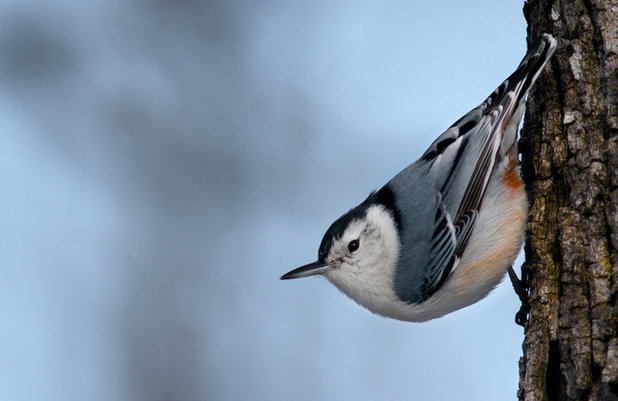
Adam Bender
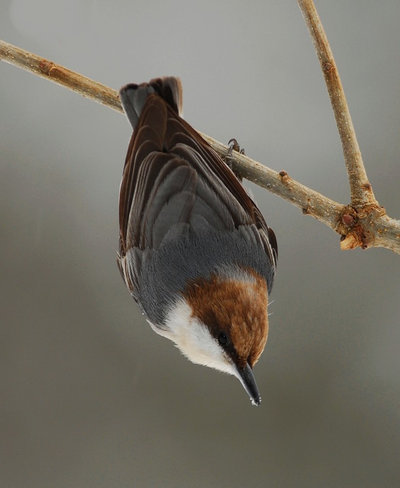
David Hollie
Common names and scientific names: Nuthatches are in the genus
Sitta. Species in North America include the white-breasted nuthatch (
S. carolinensis), the red-breasted nuthatch (
S. canadensis), the pygmy nuthatch (
S. pygmaea) and the brown-headed nuthatch (
S. pusilla).
Distribution: The white-breasted nuthatch resides across the U.S., extending north into Alberta and British Columbia, Canada, and south through central Mexico.
In the winter, you can see red-breasted nuthatches almost anywhere in the U.S. and Canada, but they live in lower Canada and the mountainous West the rest of the year.
The pygmy nuthatch spends the entire year in the pine forests of the West from southern Canada through central Mexico.
Confined to the Deep South, the brown-headed nuthatch is one of the few birds found exclusively in the U.S.
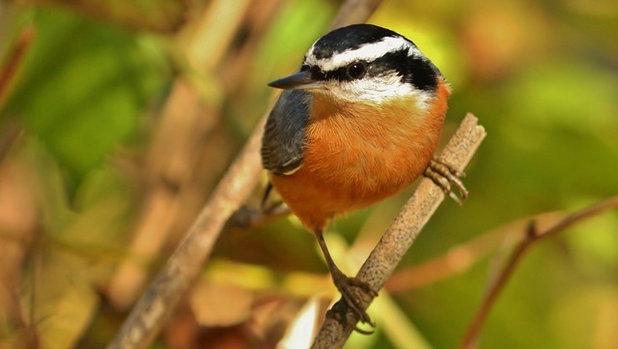
Cory McIvor
Habitat: Nuthatches get their name from the food they eat — nuts — and the way they eat it — by lodging it in a crack and breaking it open, or “hatching” the fruit from the shell, with powerful thrusts from their bills.
Their habitats must include the trees that produce the nuts that the nuthatches prefer to hatch. The white-breasted nuthatch likes deciduous forest edges with mature oak, hickory, maple and basswood, while the red-breasted nuthatch inhabits coniferous forests consisting of cedar, pine, hemlock and spruce. The pygmy nuthatch and brown-headed nuthatch both prefer mature forests of pines like ponderosa (
Pinus ponderosa) and lodgepole (
P. contorta) that are open and clear of underbrush.
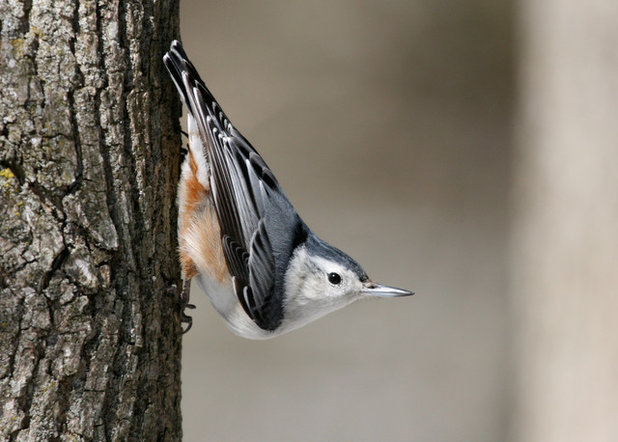 How to Identify Them
How to Identify ThemNuthatches are small songbirds with loud voices and quirky behaviors. Their upside-down foraging habits may be the easiest way to tell them apart from other birds, as they quickly hop side to side and up and down along tree trunks and branches searching every crevice for bugs and seeds. Other birds don’t walk down tree trunks, so if you see one engaging in this behavior, it’s likely a nuthatch. They have short necks, short tails and very sharp, straight bills.
Photo by Matt MacGillivray
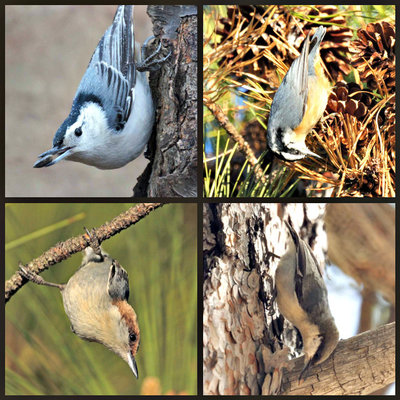
The
white-breasted nuthatch (upper left) is the largest of the nuthatches, with a dark gray-blue back, a bright white face and underparts, and a black or gray cap and neck.
The
red-breasted nuthatch (upper right) is similar, with a blue-gray back and a black cap, but it has a rusty red belly and a white eyebrow with a black eye-line that gives it a distinct striped pattern on the head.
The
pygmy nuthatch (lower right) has a slate-gray back, pale underparts and a brown cap that covers the eye.
The
brown-headed nuthatch (lower left) is similar in color pattern as the pygmy nuthatch but smaller. The easiest way to tell these two species apart is by location, as their ranges don’t overlap.
Upper and lower right photos by Mikes Birds; lower left photo by Matt Tillett
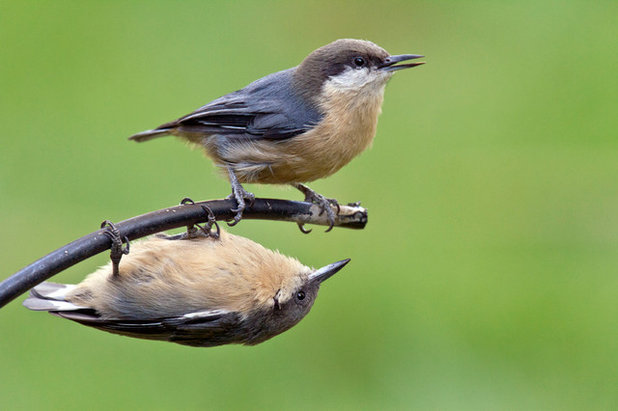
Christine Haines
Differences between males and females. Males and females, like these pygmy nuthatches, are alike in both behavior and color pattern. The female white-breasted nuthatch has a lighter crown than the male, and the female red-breasted nuthatch has a duller crown and paler underparts than her male counterpart.
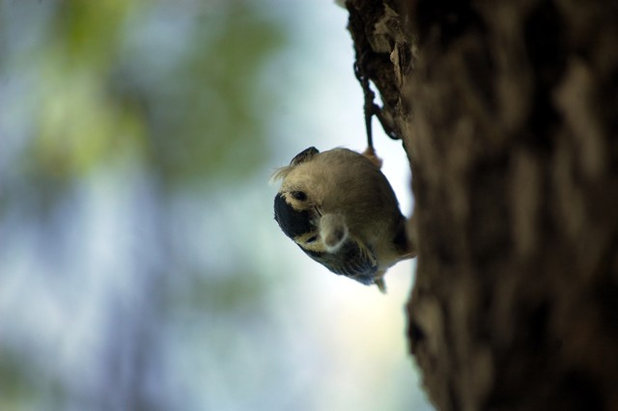 How to Attract Nuthatches
How to Attract Nuthatches
Plant native trees. Provide native trees that attract bugs in spring and produce seeds or nuts in fall. Nuthatches generally eat arthropods like spiders and insects in the spring and summer during breeding season. They raise their young on the high-protein food when it’s seasonally abundant, gleaning the bugs from the bark of trees and from needle clusters.
The white-breasted nuthatch in this photo is holding an insect cocoon, which he has just pulled out from beneath the bark. White-breasted nuthatches can be found exploring deciduous trees like native hickory, oak and maple.
Photo by J Jongsma
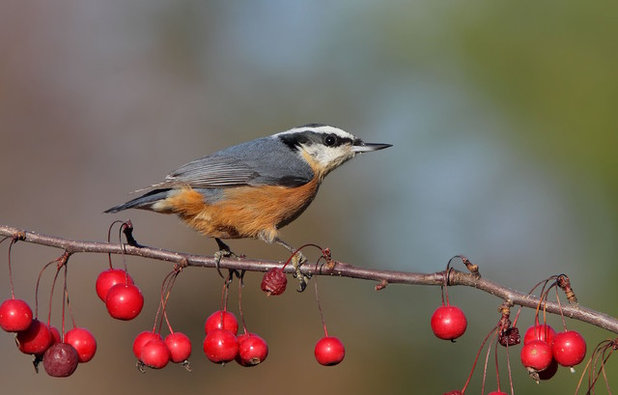
Dan Behm
During the fall and winter, nuthatches feast on seeds and nuts, some of which have been cached for this time of year, hammered into small storage places, and hidden in cracks and crevices.
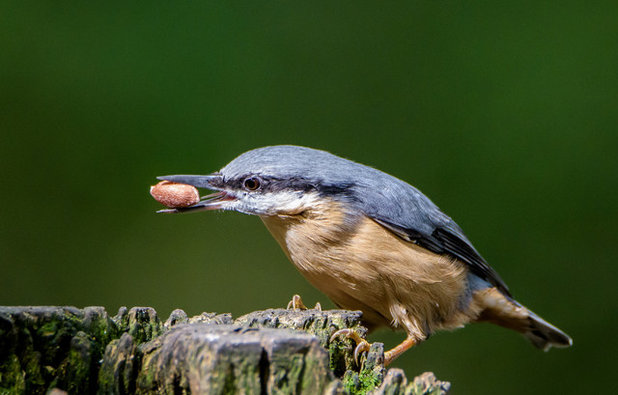
Baljinder Gill
Red-breasted nuthatches, like this one, are partial to coniferous trees like native cedar, spruce and other cone-bearing species.
Pygmy and brown-headed nuthatches are usually scurrying rapidly through native pine of some kind.
Hang bird feeders in winter. Providing peanuts, sunflower seeds and suet at feeders is another way to keep any of these winter warriors happy, healthy and in view.
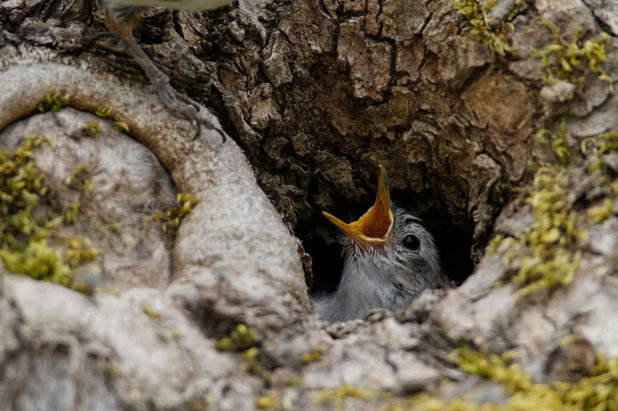
Rick Cameron
NestingAll nuthatches are cavity nesters. They tend to use cavities created by others, sometimes adding a fresh excavation to enlarge or reshape the space. When it comes to gender roles, the male white-breasted nuthatch picks the nest location, but the female does most of the building. The female of a red-breasted pair will pick the site and build the nest. Sometimes an unmated male will also engage in nest building in an attempt to attract a female.
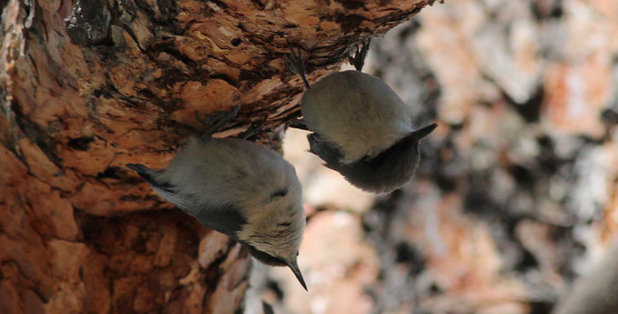
Pygmy and brown-headed nuthatches are communal builders, with multiple generations helping to excavate the cavity and build the nest. Pygmy nuthatches (shown here) can pack up to 100 members in a single cavity. They can also manipulate their body temperature, dropping into a controlled hypothermia to conserve energy.
Few animals can manipulate their body temperature this way. Although many animals will use cavities and others will sleep huddled with family members to keep warm, the pygmy nuthatch is the only bird in North America known to utilize, and require, a combination of all three winter survival strategies.
Photo by Gary Leavens
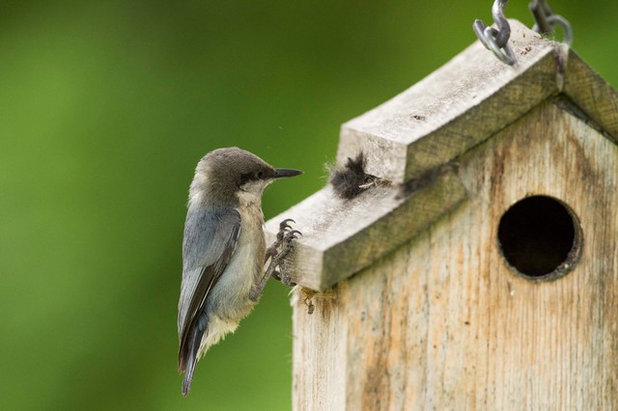
Christine Haines
Nests are built inside the cavity with small sticks, pine needles, seed wings and shredded bark forming a cup shape that’s lined with soft materials like grass rootlets, feathers, moss and animal fur. The pygmy nuthatch shown here is insulating her nest box with animal fur. Nuthatches are among the few birds notorious for collecting nesting materials from live animals. You may see one sneak up on a sleeping dog and yank a mouthful of fur right from its back.
Want to make a nuthatch house? Visit NestWatch for your own set of Cornell-approved plans. There are different blueprints for white-breasted, red-breasted, brown-headed and pygmy nuthatches that will match the bird’s natural requirements and help protect against predators. You can also leave dead trees standing to provide snags for natural cavities to invite the nesting nuthatches to your neck of the woods.
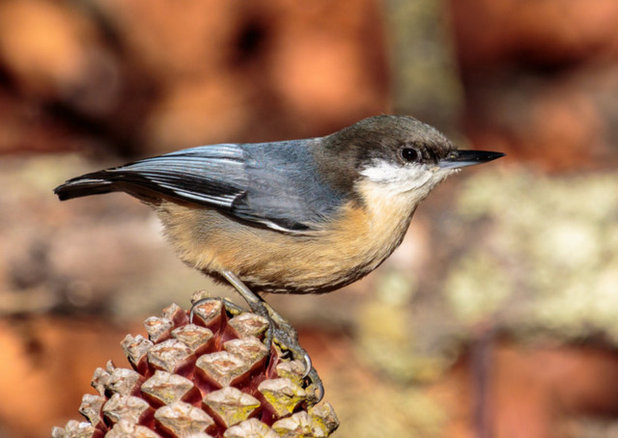
Bob Gunderson
This winter, when the air is cold and crisp and the fallen leaves have opened up the view through the forest, listen for the distinct nasal “yank-yank” call from the white-breasted or red-breasted nuthatch, or the “rubber ducky” call from a pygmy or brown-headed nuthatch. You’ll know that more than chickadees are out there, chiding you for your presence.
YardMap is a citizen science project developed by the Cornell Lab of Ornithology, designed to cultivate a richer understanding of bird habitat, for both professional scientists and people concerned with their local environment. Thousands of people are documenting their conservation efforts at home to support birds and other wildlife in their yards.See more ways to welcome birds to your garden





